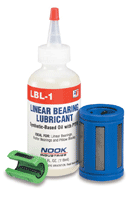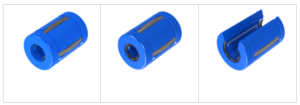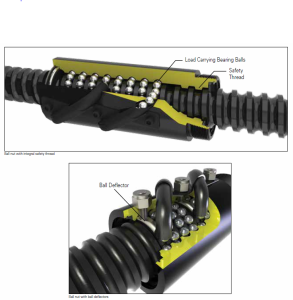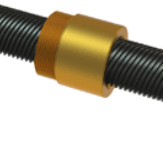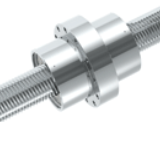Considering factors such as load, speed, torque and space, there’s no debate that bevel gear jack systems offer unique benefits to worm gear jack systems. The system’s long-duty cycle capabilities and multiple configurations make it a diverse product that suits a variety of applications.
Although worm gear jacks are sufficient for large loads that are infrequently moved, bevel gear jacks offer more flexibility and programmable options for a wider range of applications.
Bevel gear jack systems don’t come with standardized travel lengths, so each one can be built to specification. Bevel screw jacks come available in machine and ball screw models. Machine screw jacks use a trapezoidal acme screw that offers a low backlash between the nut and screw. Ball screw jacks use hardened bearing balls that allow for smooth and efficient movement of the load. Bevel gear jacks have the capability to run continuously at 100-percent efficiency without overheating. Because of the greater efficiency and rolling action, the ball screw can operate at higher speeds or increased duty cycle when compared with the machine screw jack.
Available in three jack configurations, bevel gear screws can move along the lift shaft in a variety of ways to meet customer expectations:
Translating- The translating configuration has a lifting shaft that moves through the gear box. A nut is integrated with the bevel gear such that the bevel gear and nut rotate together. When the lift shaft is held to prevent rotation, the lift shaft will move linearly through the gear box to move the load.
Rotating- A rotating jack has a lift shaft that moves a nut as it turns. The lift shaft is fixed to the bevel gear. This causes the load, which is
attached to the travel nut, to move along the lift shaft.
Keyed- The lift shaft of a translating style jack must be attached to something which prevents the lift shaft from rotating. If it is not, the lift shaft (and the load) will turn and not translate. A feature can be added to a machine screw jack to prevent lift shaft rotation. This type of jack is referred to as a “keyed jack” and is available in translating models. Anti-rotation is accomplished by a square guide attached to the screw translating inside a square stem cover attached to the jack. The square stem tube is supplied with lube fittings.
Want to learn more about bevel gear screw jacks? Here’s a great video


